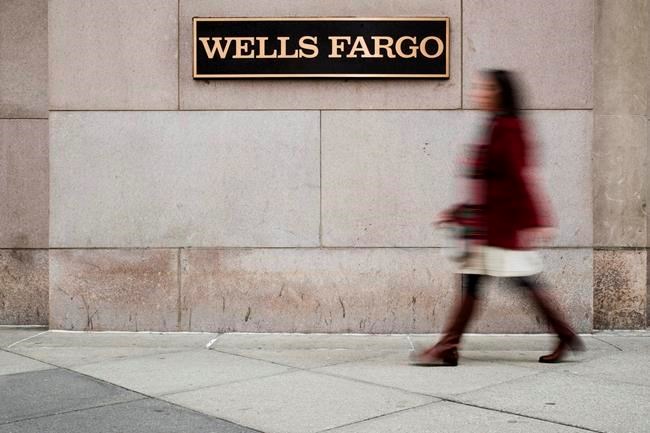NEW YORK — Wells Fargo's profits plunged nearly 90% in the first quarter as the bank set aside billions of dollars in preparation for consumers and businesses defaulting on loans due to the coronavirus pandemic.
The company said Tuesday that it boosted its loan loss provisions — or the money set aside to cover potentially bad loans — to $3.83 billion from $845 million a year ago as borrowers suddenly face the possibility of going broke because the U.S. economy has effectively shut down in a matter of weeks. Wells' earnings dropped to $653 million, or 1 cent per share, from $5.9 billion in last year's first quarter.
“We all know we haven’t seen anything like this before,” Wells Fargo CEO Charlie Scharf said on a conference call.
The San Francisco-based bank said it had revenue of $17.1 billion in the quarter, down from $21.6 billion for the same period in 2019. The numbers fell well short of Wall Street expectations; however, those targets became considerably less reliable as analysts struggled to assess the impact of the shutdown.
Like its competitors, Wells' interest income declined as the Federal Reserve cut its benchmark interest rate to near zero because of the virus outbreak. Wells reported interest income of $11.3 billion for the quarter, down nearly $1 billion from 2019's first quarter.
Wells Fargo has been hamstrung in its ability to grow since 2018, when the Fed capped the size of its assets after a series of scandals, beginning in 2016 with the uncovering of millions of fake checking accounts its employees opened to meet sales quotas. The Fed lifted that cap earlier this month as part of the federal government's Payroll Protection Program because many of Wells’ small business customers were getting shut out from applying.
Wells said a $4.4 billion decline in consumer loans from the prior quarter was driven by a $2.4 billion decrease in credit card loans. However, Wells saw a significant increase in commercial loans, which were up $52 billion from the previous quarter.
Wells also reported lower credit card fees and less credit card spending overall as the travel and entertainment sectors slumped.
The bank also saw an increase in bad loans to the oil industry due to falling oil prices as a result of a sharp decline in demand stemming from the virus outbreak.
Wells said it took actions to help customers who requested assistance, including fee waivers, payment deferrals and other assistance, including 90-day suspensions on mortgage payments. The bank said it deferred more than one million payments representing $2.8 billion of principal and interest and more than 900,000 fee waivers worth more than $30 million.
Wells said it had temporarily closed 1,400 branches, about a quarter of its retail network, to comply with social distancing recommendations in the wake of the outbreak. As a result, the bank said it saw more than a 50% increase in mobile deposits last month over March of 2019.
Shares in Wells Fargo fell 3.7% in afternoon trading.
Matt Ott, The Associated Press




